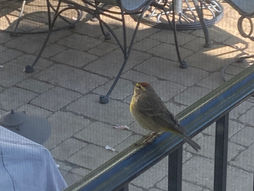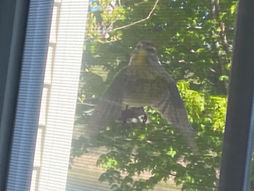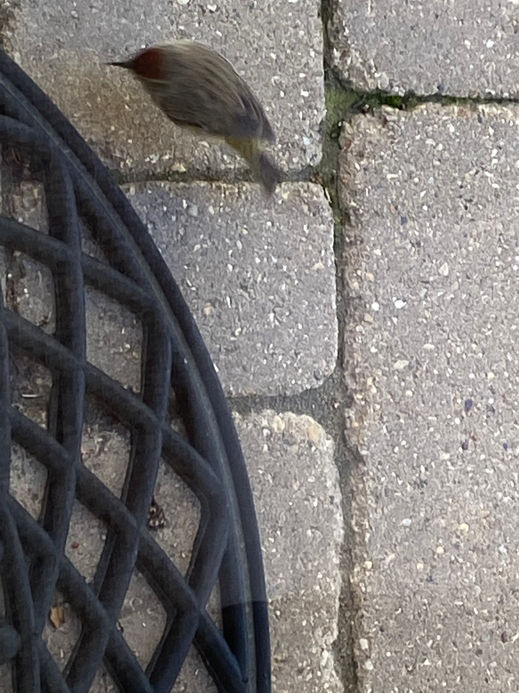Palm Warbler
Common Name: Palm Warbler.
Scientific Name: Setophaga Palmarum.
What to look for? Palm Warblers are small songbirds, although larger than a typical warbler. They have dull olive-brown upper-parts and yellow underparts streaked with brown. They have a deep yellow color in their undertail-coverts and throat. This contrasts with a whitish or slightly yellow breast and belly. The cap is chestnut-brown. The outside corners of their tails flash white in flight. The eyes of the Palm Warbler are small and black. Their bills are short and pointy. Their tails and legs are longer than most warblers.
Where can they be found at Carillon Stonegate Pond? You can find Palm Warblers around our trees, bushes, and backyard feeders. They are typically here for several months each throughout the Spring and Fall. These birds spend much of their time foraging on the ground so look for them under your feeders. You will find them among groups of sparrows, juncos, and other birds.
How big are they? The Palm Warbler averages approximately five (5) inches in length. And their wingspan is just over eight (8) inches. They weigh in at approximately four (4) ounces.
What are their flight patterns? Palm Warblers take short flights between adjacent branches when foraging in a tree or to catch an insect in flight. And they fly with rapid wingbeats.
How else do they behave? Palm Warblers spend time walking around while foraging on the ground. They will stand out from other foraging birds with its characteristic up and down wagging tail. During breeding season, males chase and fight intruding males. These intruding males announce their presence by singing.
What’s for dinner? Mostly insects. Palm Warblers primarily eat insects such as caterpillars, mosquitoes, flies, grasshoppers, ants, bees, and spiders. During the winter, they will also eat seeds and berries.
Where do they take up residence? The boreal forests of Canada are the summer home to Palm Warblers. They winter in the Caribbean and along the southeastern U.S. During spring and fall migration in the eastern U.S., they stop in overgrown fields, edges of streams and ponds, forest edges, and other areas with scattered trees and shrubs.
Where do they breed and nest? Palm Warblers only breed in the boreal forests of Canada. The nest is built on the ground nestled in peat moss, often at the base of a small tree or bush. They may lay up to five eggs that will incubate for approximately two weeks. The young usually leave nest in around 12 days. They generally have one or two broods per year.
Where do they migrate? In Illinois, Palm Warblers are common migrants. In their spring migration north, they are here in late April and May. And as they pass through during their fall migration to Florida and the Caribbean, Palm Warblers are here in late September and October.
What is their conservation status? There is no concern. Palm Warblers are common with stable populations. Partners in Flight estimates a global breeding population of 13 million.
Do they make any interesting sounds? Palm Warblers sing a buzzy trill with each note swelling up in pitch slightly. In flight, they often give a thin “seep” call. Here is a link to the sounds of the Palm Warbler.
Interesting Facts About Palm Warblers:
-
Although the Palm Warbler’s name might imply that it is a tropical bird, it is actually one of the northernmost breeding of all warblers.
-
An estimated 98% of all Palm Warblers make the boreal forests of far northern Canada their summer home.
-
One of their most important roles is to control insect populations.
-
The oldest recorded Palm Warbler was approximately 7 years old.
For more information on the Palm Warbler and sources of information used in this blog (these are the sources that I am using to learn as I blog), please visit All About Birds, Audubon Society and University of Michigan Animal Diversity Web. And the Cornell Lab of Ornithology provides a wonderful source of information for anyone interested in learning more about birds.
The Carillon at Stonegate community is very fortunate to have a variety of wetland, forest and prairie environments conducive to a variety of birds and other wildlife, plants and insects. Our community and the Kane County Forest Preserve do an exceptional job in maintaining this natural environment – both for the benefit of the birds and wildlife and for our residents to enjoy.
Take a hike and see what you can find – and identify!








